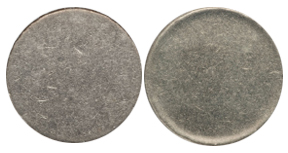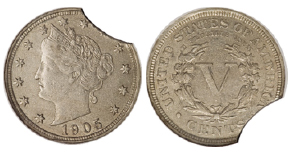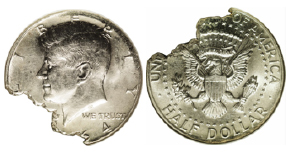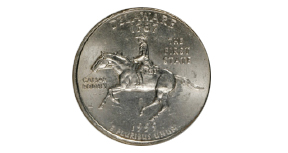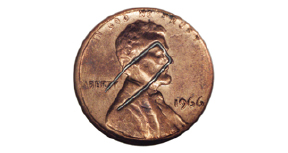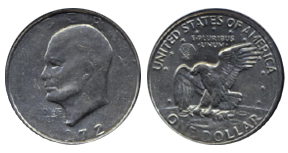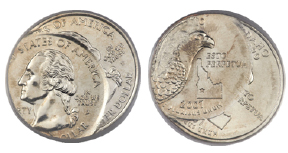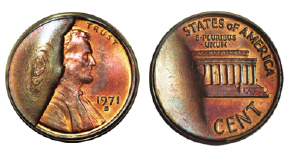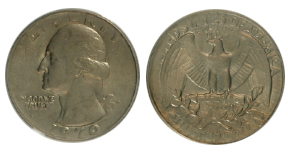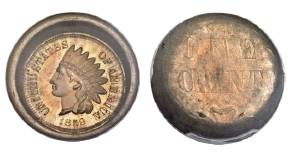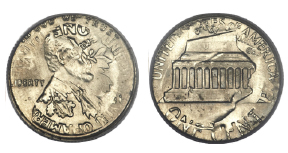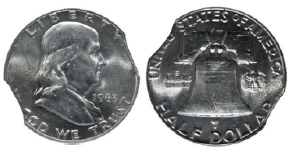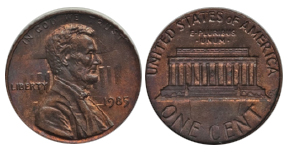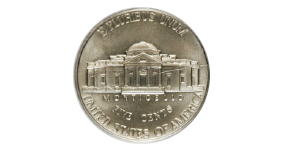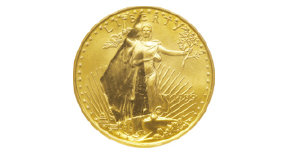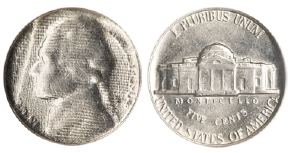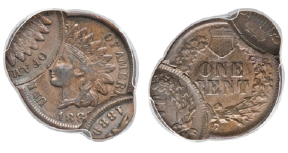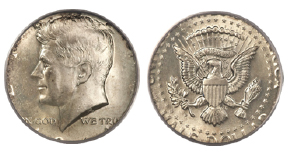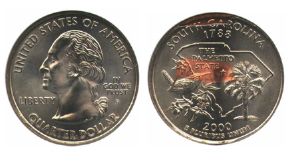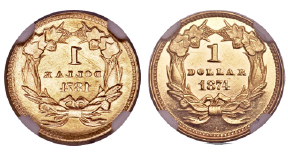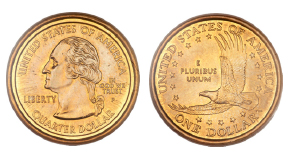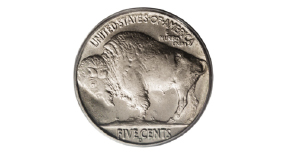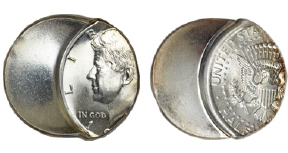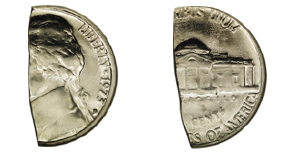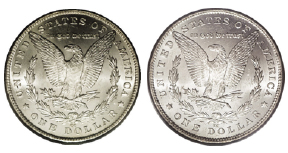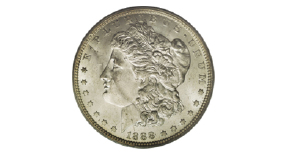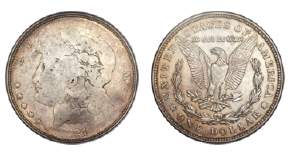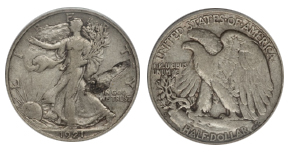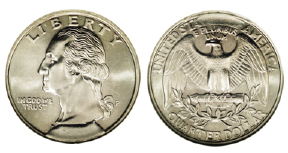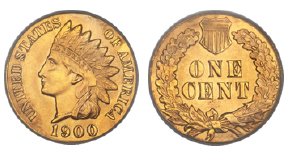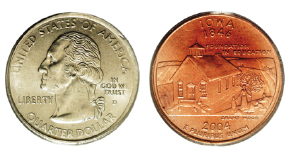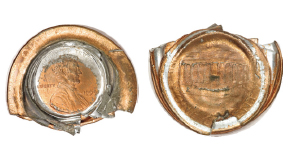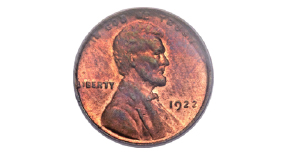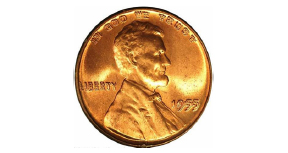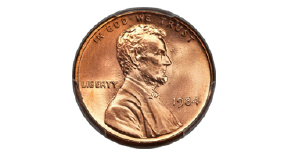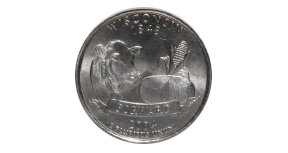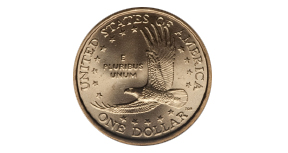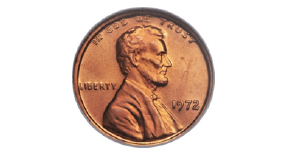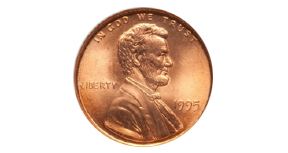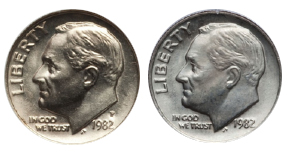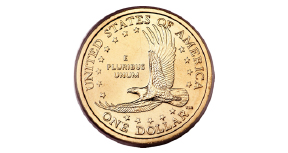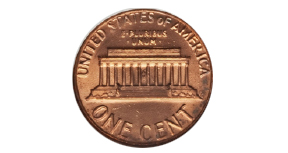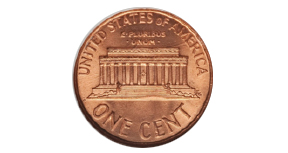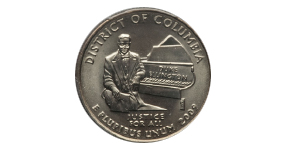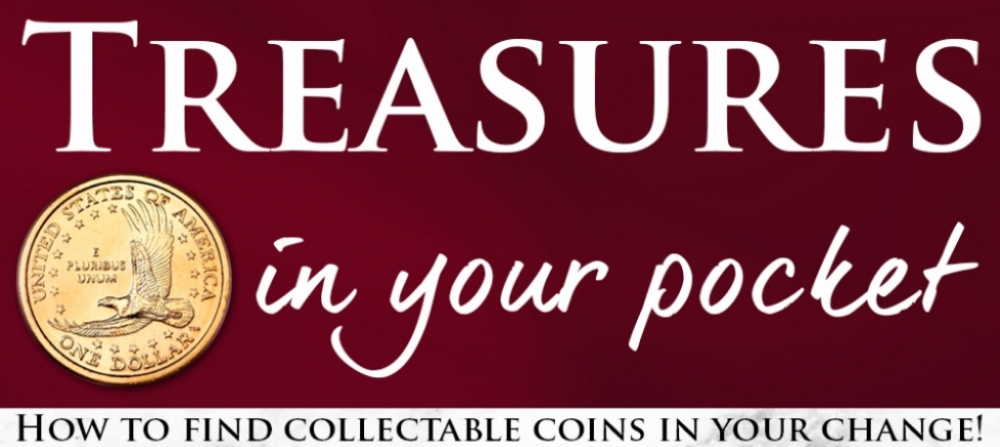
Introduction
Almost everyone has a box, can, jar or piggy bank full of spare change. Who knows what treasures might be found in this change? And how do you tell the difference between ordinary change and a collectible coin? Is it possible to find something worth more than face value? Yes, it is! Even better, you might be able to make some money from your pocket change. Numismatics is the study and collection of various forms of money throughout history. It is an intriguing and rewarding hobby.
Numismatists can do well, given the opportunity, by examining many different coins to notice differences—including comparisons among coins with the same denomination. There are subtle variations—even among coins with the same year and mintmark—and recognizing these distinctions can pay off handsomely. A numismatist becomes skilled through years of study, but eventually the effort becomes worthwhile and it’s possible to find real treasures in your change.
New collectors may become discouraged if they don’t make exciting finds right away, but patience has proven to be a valuable trait toward becoming a successful collector. Many treasure hunters say it’s not about having the treasures, it’s about finding them—the thrill of the hunt.
The guidelines provided here are intended to assist the beginning collector. Please consult “The Coin Collector’s Survival Manual” by Scott A. Travers, an essential read for anyone pursuing numismatics. The American Numismatic Association’s website, www.money.org is packed with information and includes a Frequently Asked Questions page (https://www.money.org/FAQ) that is a great read for anyone starting their adventure in the “Hobby of Kings.”
The Tools of the Trade

Have a consistent work space free from clutter and distraction. Good lighting is essential. Most numismatists prefer to use an incandescent lamp with about a 70-watt bulb. Florescent and natural light often hide imperfections, including minute scratches known as hairlines (some experts note that LED lighting spots hairlining). Hairlines on coins are usually caused by friction during circulation or by improper cleaning. Hairlines usually lower the value of coins, so it’s important to recognize this damage. Numismatists know that cleaning coins is generally a bad idea and selling problematic coins is difficult.

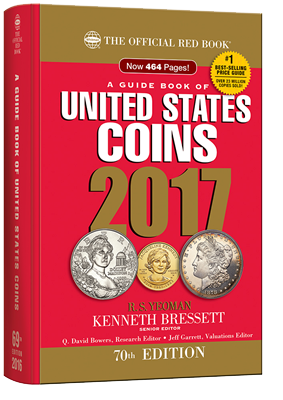
“Buy the book before you buy the coin” is one of the most popular sayings in numismatics. As experienced numismatists can attest, the knowledge gained from even one book purchase may save more money down the road.
Where Can I Find Coins to Search Through?
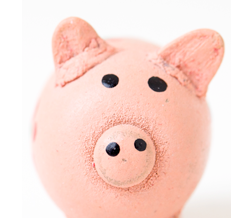
Most banks and credit unions deal with vast amounts of coinage but may not have the time to look through it, so purchasing change in bulk from these places is a good option. Many numismatists order boxes of rolled coins through their bank, but some banks may charge a nominal fee for this service. A bank may also set a limit on how many boxes/rolls you can acquire at one time.
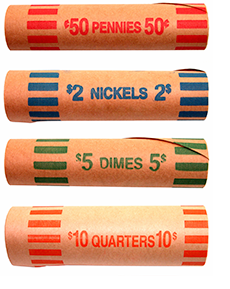
Knowledgeable numismatists can make money coin roll hunting. A bank cannot charge you more for a coin than its face value, so the more valuable coins that you keep from the rolls will only cost you face value. Coins that are not collectible can be returned to the bank, where you will receive face value for them with no loss.
Some banks allow their customers to turn in loose change, but some require coins to be rolled. If this is the case you may want to ask the bank for empty paper rolls before beginning your search. If you are returning less commonly used denominations like half dollars, consider returning them to a different branch. If you return them to the same branch that ordered them for you, they may be less enthusiastic about helping you next time. Be courteous to bank employees and remember it’s a bank—not a coin shop.
Occasionally, a coin roll hunter will mark rolls they’ve already searched for other collectors—a caution not to waste time looking through the coins. While thoughtful, know that not every person is searching for the same things, and there’s no accounting for the skill or interest of the previous hunter.
Coin Shows & Dealing with Dealers
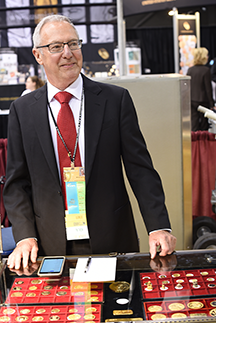
Some coin dealers are happy to interact with new collectors while others aren’t. You will develop a feel for this as you walk the bourse (the floor of a coin show). If you get a negative vibe from a dealer, move on to the next one. There are many friendly numismatists who enjoy helping young or new collectors.
What Should I Look For?
When starting your treasure hunt, begin by looking for anything unusual—odd shapes, strange colors, older or unfamiliar designs—and set these coins aside until after you’ve looked through the rest. Study the Red Book and jot down some of the better dates for the coins you’re looking through—what numismatists call “key” dates. Many times a key date coin also involves a mintmark. For example, a Washington quarter from 1932 would be a tremendous find in your change—worth a few dollars. But if there is a “D” or “S” mintmark on the reverse, the value of the coin jumps to a few hundred dollars!
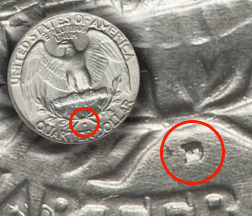
As stated before, novices may find damaged coins and think they are “errors.” Error coins do exist but the Mint catches most of these mistakes, and this is why errors can fetch considerable prices. Many coins become damaged while in circulation. Some have been drilled or banged to transform the coin into a piece of jewelry. Hang on to any odd-looking coins for further research when you have the time. It’s also a good idea to show these to your local coin club or reputable dealer; information for both can be found on www.money.org.
The Start of an Epic Numismatic Journey
A lifelong coin collector often begins with something as simple as deciding to keep coins from a vacation in another country or as a special occasion gift from a relative. Many people find something unusual in their change, and think they may have a real treasure. For most, the item does not lead to the road to riches; but for others, it is the first step of their journey in numismatics.
Many beginners hold on to odd-looking coins as they start to develop the collector’s eye. While most of these coins are likely to be damaged coins rather than genuine errors, this is a natural part of the learning curve in numismatics. The time spent looking at coins is an investment in developing the skills to spot an item that could be worth many times the coin’s face value. New collectors may become discouraged if they don’t make exciting finds right away, but patience has proven to be a valuable trait toward becoming a successful collector. Another key to success is reading and doing research in order to recognize opportunities when they appear.
As stated earlier, many treasure hunters say it’s not about having the treasures—it’s about finding them. Anyone who has ever prospected for gems and minerals, used a metal detector in a field or at the beach—even those who frequent garage and estate sales—can attest to the excitement and thrill of the hunt.
The “P-D-S” System of Error Coins
Alan Herbert is credited with devising the P-D-S system of classifying coin errors. Collectors might assume this is referring to the US Mint facilities at Philadelphia-Denver-San Francisco, but this is not the case. The “P-D-S” system refers to Planchet, Die or Strike errors.
Planchet errors refer to a problem with the coin blank/planchet itself—whether it’s misshapen, too large/small, or the wrong metal for the denomination. Sometimes the different metals that make up a planchet may be improperly mixed, creating what looks like part of the coin’s surface “peeling” away (what specialists refer to as a lamination error). These alloy errors can sometimes give older cents a wood-grain appearance.
Die errors happen when there is a problem with the creation of the dies in the Mint’s tool shop or during the production life of a die. Sometimes dies break apart and form small cracks that look similar to lightning bolts on coins. Errors known as cuds occur when parts of the die break apart near the outer edges, creating a blobbed appearance on a coin. Sometimes dirt and/or grease gets trapped in the negative recesses of a die causing these filled-in portions to appear as “missing” from the image on a struck coin.
Strike errors can also happen within the coin striking chamber if a coin isn’t centered correctly, if it gets stuck in the press and becomes subject to repeated blows from the dies, or if foreign material gets trapped between the planchet and a die at the moment a coin is struck.
(Die) Variety Is the Spice of Life!
A die variety is a variation in the normal design of a coin, usually caused by the preparation or maintenance of dies. Typical die varieties include doubled dies, repunched mintmarks or dates, and changes to die surface from over-polishing or die clashes. Perhaps the most famous die variety is the 1955 doubled die obverse (DDO) Lincoln cent. The chance of finding one in your change is slim, but there are many other varieties in circulation.

Understanding the modern coin minting process is a vital step to successfully identifying error and variety (E-V) coins. Strike It Rich is a great book for beginning die variety collectors who want to focus on current circulating US coins. The Error Coin Encyclopedia is a great resource to aid your study of coin production mishaps.
Collecting coins by die variety, or “cherrypicking,” is quite popular. Some problematic dies go unnoticed by Mint employees and strike numerous specimens. In other instances, the Mint will quickly catch and fix or remove the dies, and sometimes these dies only strike a few coins that get released—creating a new die variety and kicking off a nationwide coin hunting frenzy! Don’t believe it? Look through a recent edition of the Cherrypickers’ Guide and compare some of the normal prices to the variety prices. Who wouldn’t be excited to pay $10 for a quarter, only to discover that it’s a tougher die variety worth a few hundred dollars?
Dealing with Die Varieties
Not all coin dealers have an interest in distinguishing between die varieties, even though many of these variants can fetch prices over $100 each. As a basic rule, the more valuable the “normal” version of a coin, the less of a premium another variety of that coin will have. For example, a Lincoln cent from 1917 in Very Good condition has a retail value of less than one dollar, but a 1917 Lincoln cent with a DDO in the same grade has a retail value of around $150. However, a doubled die on a $20 gold piece will not command as much of a premium above the price of the “normal” version, as it’s already a high value coin. Demand is another factor. There are thousands of different die varieties, but many are not significant enough to grab much attention—let alone fetch a high price. Read the “Factors Affecting Value” section in the front of the Cherrypickers’ Guide for more information.
Lesser-known die varieties that appeal to collecting specialists may not be a top priority to dealers who are concerned with the profitability of their inventory overall. In the aforementioned Cherrypickers’ Guide, there is an appendix that reviews guidelines for collectors to consider when purchasing coins from a dealer. This is recommended reading for the aspiring numismatic treasure hunter.
Most of the following images include pictures of die varieties you may find in your change today. There are also some pictures of die varieties on relatively common, older coins that you might be able to find at low prices in coin dealers’ coin “junk bins.” The pictures may only show one side, as the other side of each coin is considered “normal” in almost every case. Many of these coins can be seen in the Cherrypickers’ Guide and may be accompanied by their individual Fivaz-Stanton (FS) catalog number.

Trustworthy Sources of Information
Our technological growth is occurring at an alarmingly fast rate, and it effects everything in our world—including coin collecting. Just as you would keep your guard up when it comes to anything online, treat your numismatic sources in much the same way. There is a wealth of information available, but it is not all good. Always consider the trustworthiness of your sources. This can save you time, money and aggravation.
Do your best to explore trustworthy coin websites—the ones provided by great numismatic clubs like the American Numismatic Association, the American Numismatic Society, Florida United Numismatists, the Greater Houston Coin Club, the Pennsylvania Association of Numismatists, the Texas Numismatic Association, and many others. The websites of publications like Coin World or Numismatic News also provide a wealth of information, and a subscription to either one or both of these magazines will keep you up to date with the current trends in the hobby. Membership in CONECA also includes a subscription to their bi-monthly magazine, ErrorScope, which contains great photos and articles about recent happenings in errors and varieties. Prominent coin grading companies have key numismatic information available online, including data about certain coins.
The following list contains some of the best websites available to numismatists. Use these websites in conjunction with the recommended books listed below. Reading only a couple of books or relying only on internet sources will not provide sufficient knowledge to do well as a coin treasure hunter. And while there are other helpful, educational numismatic websites to assist you, the sites listed here will start you out in the right direction.
• www.money.org (ANA—American Numismatic Association)
• www.numismatics.org (ANS—American Numismatic Society)
• www.whitman.com (Numismatic book company, publisher of the Red Book and CPG)
• www.coinworld.com (Coin World magazine)
• www.shopnumismaster.com/shop-by-product/magazines (Various periodicals, including Numismatic News and Coins, as well as others about banknotes and world coins)
• www.coinagemag.com (COINage magazine)
• www.usmint.gov (The United States Mint)
• www.usmint.gov/circulating_coins/index.cfm?action=coins (U.S. Mint: How coins are made.)
• www.moneyfactory.gov (The BEP—The United States Bureau of Engraving and Printing—for paper money)
• www.conecaonline.org (CONECA—Combined Organizations of Numismatic Error Collectors of America)
• www.varietyvista.com (Variety Vista—home of the CONECA Master Listing of Die Varieties)
• www.lincolncentresource.com (Lincoln Cent Resource—reference specifically for Lincoln Cent die varieties)
• www.ngccoin.com/coin-explorer (Reference of US Coins from Numismatic Guaranty Corporation)
• www.pcgscoinfacts.com (Encyclopedia of US Coins from Professional Coin Grading Service)
• www.wildwinds.com (Information about Ancient Coins)
• forums.collectors.com (PCGS online collector forum/social media exchange)
• www.cointalk.com (CoinTalk—an online social media forum for numismatists)
There are numerous websites where coins are bought and sold, and these can be helpful in that they provide fair market valuations. (These are prices resulting from recent auctions and are often the most accurate representations of current coin values because they reflect the prices people actually paid for certain items.) For more information regarding reputable dealers and local coin clubs, use www.money.org and go to “Find A Dealer” through the Dealer Directory or “Find A Club” in the Club Directory.
Some of the books mentioned throughout this work are listed here for your convenience.
• A Guide Book of United States Coins (the Red Book) by R.S. Yeoman; Ken Bressett, Senior Editor.
• A Guide Book of United States Coins: Mega Red, Expanded Deluxe Edition by R.S. Yeoman; Ken Bressett, Senior Editor; Q. David Bowers, Research Editor; Jeff Garrett, Valuations Editor.
• The Error Coin Encyclopedia by Arnold Margolis and Fred Weinberg.
• Cherrypickers’ Guide to Rare Varieties of United States Coins (6th Ed., Vol. I and II) by Bill Fivaz and J.T. Stanton.
• Strike It Rich with Pocket Change (4th Edition) by Ken Potter and Brian Allen.
• The Coin Collector’s Survival Manual (Revised 7th Edition) by Scott A. Travers.
The Sad Reality of Price Guides
Keep in mind that a price guide is only that—a guide to help navigate your way through the challenging process of arriving at realistic coin prices. The figures in a price guide like the Red Book are retail prices. A dealer cannot pay full retail price; they pay wholesale prices to earn some profit. Dealers also have business expenses (overhead), such as traveling to shows and table fees. The guy at your local flea market may have some great deals, but can you be certain of his knowledge? Chances are that he is not obliged to follow a code of ethics like an ANA member. Dealing with reputable dealers may cost a little more but will pay off in the long run.
Selling coins to dealers is more difficult than buying them and is something you probably won’t feel comfortable doing until you are knowledgeable. Coins don’t always go up in value; you might buy certain die varieties cheaply but may have to sell them cheaply! Die variety collectors learn this hard lesson because even the figures listed in the Cherrypickers’ Guide are retail prices, and many dealers are not concerned with most die varieties. It is important to know relative rarity, collector demand and basic pricing. The saying caveat emptor (Latin for “let the buyer beware”) also applies to sellers—know your values so you don’t sell too cheaply.
Checking auction records is a fantastic
way to help establish fair market valuations for collectible coins. Use this information in conjunction with retail price guides. By doing this, you can become savvy enough to know when a coin is priced too high and should be avoided or priced too low and should be picked up immediately. This is another form of coin treasure hunting that can take years of dedication to reach.
Conclusion
This resource provides information to anyone embarking on a numismatic treasure hunt, regardless of age. You may experience highs and lows, but don’t give up! Study every coin that crosses your path. Prices for collectible coins rise and fall like the tides, and there is no numismatic crystal ball that will foretell the future, so no one can say with perfect accuracy what something might be worth years from now. Remember to use all of the resources you have—especially this one, Treasures in Your Pocket. Balance information online with research from trusted sources, books, and periodicals. Take advantage of the vast wealth of knowledge accumulated by our fellow collectors, researchers, and specialists with years of experience who have paved the way. Share your newfound knowledge with other collectors to help them broaden their experiences. Above all else, please enjoy our hobby. Happy treasure hunting!

